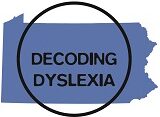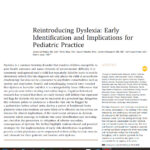
Pediatrician and Early Educators play an early role with dyslexia.
Throughout 2019-2020, DDPA continues to lay the foundation for many key advocacy and educational campaigns. Two such campaigns were developed by our amazing Action Coordinators from the Education Committee focusing on informing Pediatricians and Early Childhood Educators (ECE’s) about dyslexia, the importance of early screening, and really laying the groundwork to build a reciprocal relationship with both in Pennsylvania.
Spreading awareness about the vital role Pediatricians and Early Educators is paramount in early identification of literacy skill deficits (e.g, dyslexia, dysgraphia, and dyscalculia). Pediatricians and Early educators are in a unique position because they see children before formal reading instruction occurs and throughout the period when rapid growth is expected.
By sharing several key pieces of information that can support children and their families as they approach the elementary school years will help ensure our youth have a strong literacy base by administering such things as early dyslexia screeners.
Below are documents created by Decoding Dyslexia PA members that parents and caregivers can share with their Pediatrician and Early Educators. Feel free to download and share.
The Vortex of Dyslexia
“For dyslexic children, what begins as an educational problem can quickly descend into an emotional problem. School reading or writing assignments may serve as triggers for intensely negative emotions of fear, stress, and anxiety, which in turn lead to memory and attention disruptions, which lead to physiological manifestations of that unease—and in some cases, catastrophic thoughts. By considering these cascading effects, we can understand why depression and, sadly, suicide rates for dyslexic children are higher than for the general population.” Read more here from Lexercise:





